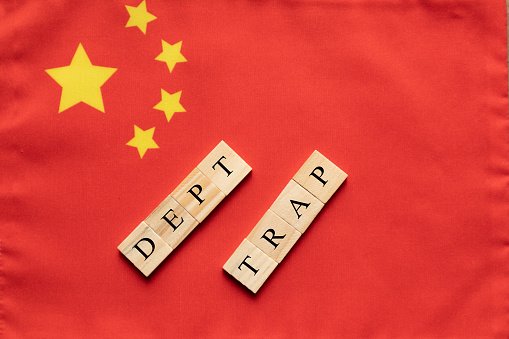Looking back on 2020, the coronavirus epidemic ravaged the world, the world economy continued to be sluggish, and development challenges were unprecedented.
Under the complex and changing situation, the “Belt and Road Initiative” cooperated to control the wind and drive the economic and ecological explosion along the route.
At the video conference of the Advisory Committee of the Belt and Road Initiative International Cooperation Summit Forum held a few days ago, Wang Yi, State Councilor and Foreign Minister of China, pointed out that in the face of the impact of the COVID-19 epidemic, the Belt and Road Initiative international cooperation has shown strong resilience and vitality, which has played an important role in combating the epidemic, stabilizing the economy and protecting people’s livelihood of all countries.
Up to now, China has signed 201 cooperation documents with 138 countries and 31 international organizations to jointly build the Belt and Road Initiative, and positive progress has been made in all aspects of work.
This once again shows that in the face of the impact of the epidemic, the consensus of all parties to seek development through cooperation is more cohesive, and the desire to improve the well-being of the people is stronger in the Belt and Road Initiative cooperation. The Belt and Road Initiative is winning the support of more and more countries with its practical effect on promoting common development.
This is a “healthy road” and provides strong support for cooperation in the fight against the epidemic.
Since the outbreak of the epidemic, China has adhered to the concept of a community of destiny for mankind, played the role of the world’s largest supplier of anti-epidemic materials, provided materials and technical assistance to countries along the Belt and Road Initiative, and provided more than 280 batches of emergency anti-epidemic material assistance to more than 150 countries and international organizations.
At present, the epidemic is still spreading. Cooperative war is the most urgent task for countries along the Belt and Road Initiative.
Chinese enterprises have cooperated with many countries to carry out phase III clinical trials of vaccines, and have made important progress. China has repeatedly said that when the vaccine is developed and put into use, it will serve as a global public product to contribute to the accessibility and affordability of vaccines in developing countries, and the Belt and Road Initiative partners will certainly benefit from it.
This is a “road to recovery” and has injected a strong impetus into economic development. Against the backdrop of the global economic recession, China’s trade and investment cooperation with the Belt and Road Initiative partner countries has achieved counter-trend growth.
In the first three quarters of this year, China’s total trade and imports and exports with countries along the route reached more than $960 billion, a growth rate of 0.8 percentage points higher than the overall national level.
Direct investment in non-financial countries along the route reached 13 billion US dollars, an increase of 29.7% year-on-year. Yuri Tavrovsky, a professor at the Russian People’s Friendship University, believes that the epidemic has hit developing countries the hardest, and many countries have high hopes for cooperation within the framework of the Belt and Road Initiative.
In the 14th Five-Year Plan and the long-term goals for 2035, China proposed that accelerating the construction of a new development pattern with the domestic large circulation as the main body and the domestic and international double cycle mutually promote each other will provide a strong impetus for the high-quality joint construction of the Belt and Road Initiative.
In the future, China’s import demand will further expand, providing more opportunities for partner countries to grow economically.
This is a “growth path” and creates more opportunities for interconnection. As the main line of joint construction of the Belt and Road Initiative, interconnection plays an important role in breaking the bottlenecks that restrict economic development, driving the development of relevant industries, and enhancing the development momentum of various countries.
In recent years, the Belt and Road Initiative has continued to make efforts to accelerate infrastructure connectivity, and a number of major projects have progressed smoothly – the whole tunnel of the Lao Railway in China has been completed, the construction of the Yawan High-Speed Railway in Indonesia has achieved the node goal, and the operation of the Orange Line Project in Lahore, Pakistan has been opened to traffic.
Former Serbian Foreign Minister Vuk Jeremić said that the epidemic has caused temporary physical estrangement between people and countries, and the Belt and Road Initiative is promoting the connection between people and society.
Under the new development pattern, China adheres to innovation-driven development, comprehensively shapes new advantages of development, and seeks high-quality economic development. This development idea is in line with the needs of countries along the route to improve the level of economic development and incubate new economic growth points, and will better connect with the development strategies of various countries.
In the future, countries along the route are also expected to create more new cooperation highlights in smart cities, 5G, artificial intelligence and other fields to jointly build the “Digital Silk Road” in the post-epidemic era.
Good wind depends on strength. People have reason to believe that the east wind of China’s new development pattern will certainly help countries along the Belt and Road Initiative to disperse the haze and revitalize the wings of economic recovery.



